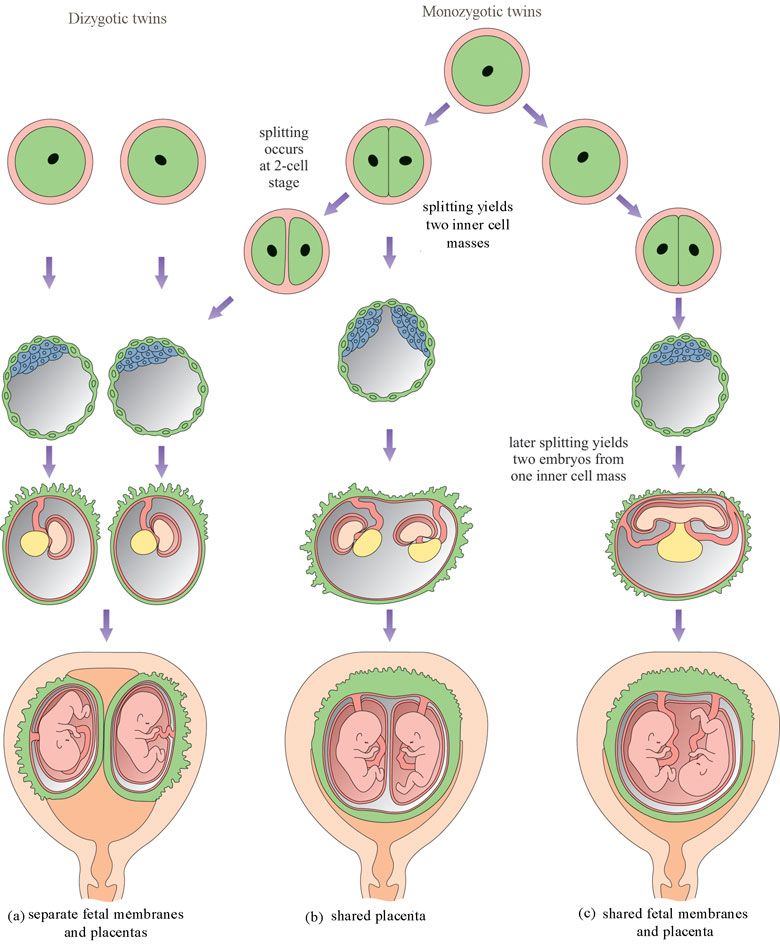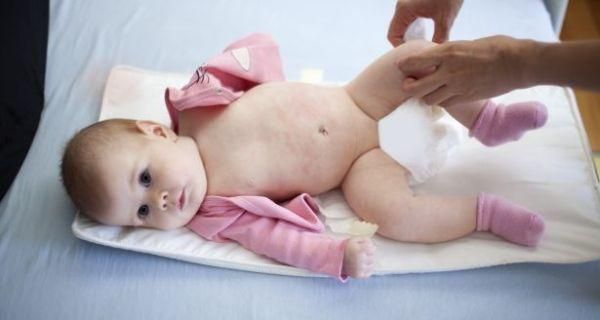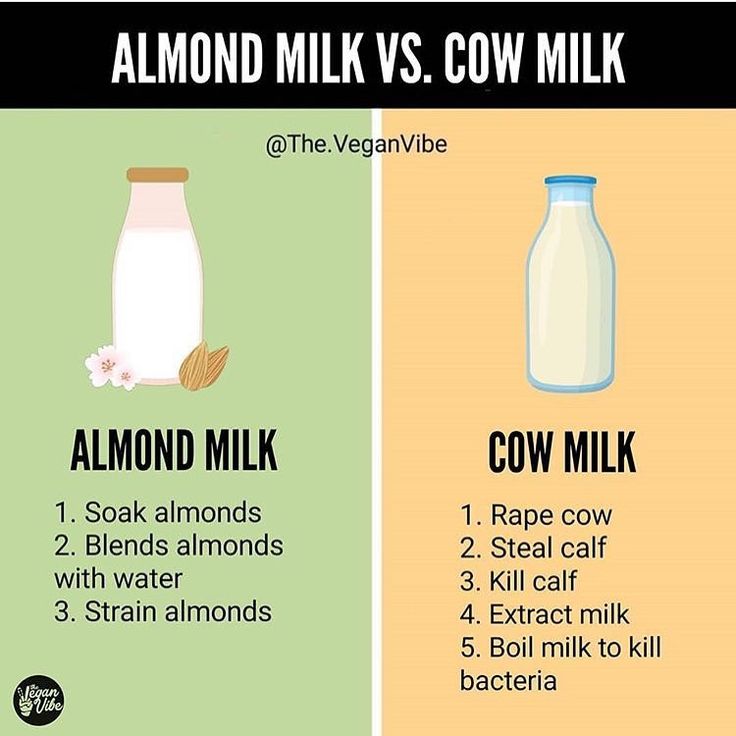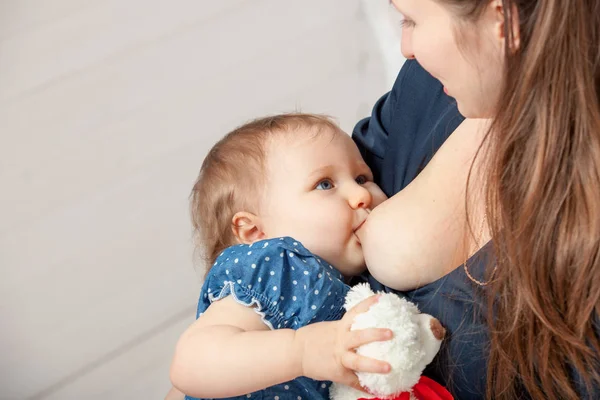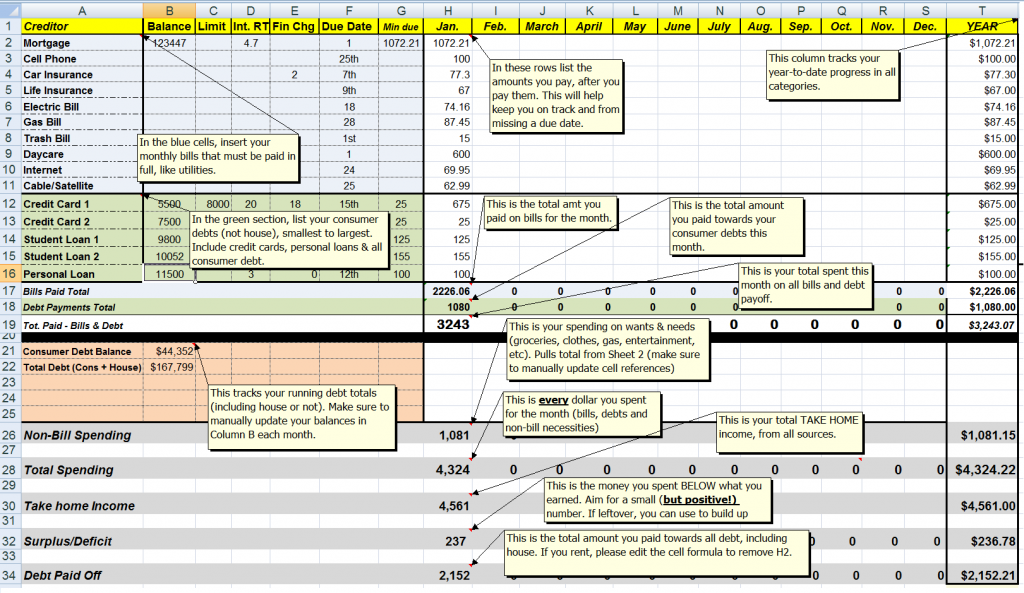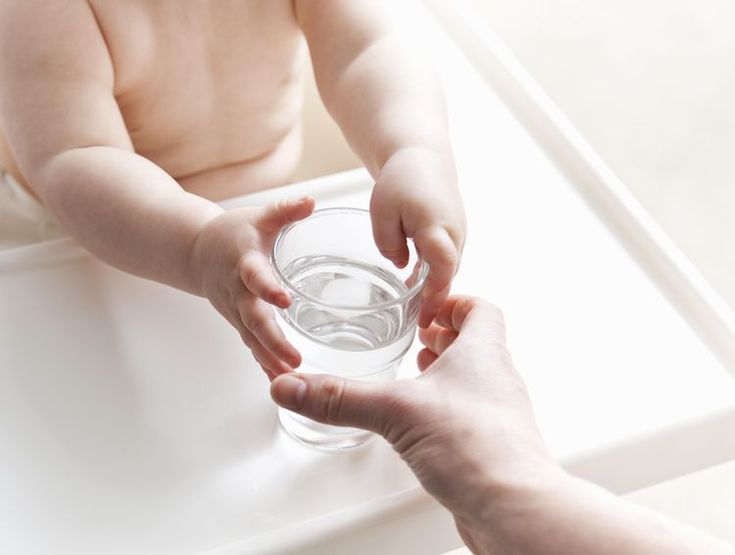2 types of twins
Fraternal twins & identical twins
About twins
We usually describe twins according to:
- how many eggs they develop from – 1 or 2
- whether they share a placenta in their mother’s womb.
The main types of twins are fraternal twins and identical twins.
Most twins are born healthy, but a twin pregnancy can mean a higher chance of health complications for you and your babies. If you're pregnant with twins, you and your babies will need extra check-ups.
Fraternal twins
All pregnancies start when a sperm fertilises an egg. This fertilised egg is called a zygote.
Sometimes a woman’s ovaries release 2 eggs, and a separate sperm fertilises each egg. This forms twins. These twins are called fraternal twins, dizygotic twins (meaning two zygotes) or non-identical twins.
During pregnancy, the developing babies get oxygen and food from their mother through the placentas and umbilical cords. Fraternal twins have separate placentas and umbilical cords. The technical name for this is dichorionic.
Fraternal twins can be the same or opposite sex and their genes are as different as any other brother and sister. Often, same-sex fraternal twins look different. For example, they might have different hair or eye colour. Occasionally they look quite similar.
Fraternal twins happen in about 70% of twin births in Australia.
Very rarely, fraternal twins share a placenta. These types of twins are called chimaeric twins.
Identical twins
Sometimes a fertilised egg splits within a few days of conception to produce genetically identical twins. Because these twins come from one zygote, they’re also known as monozygotic. Identical twins are the same sex.
There are 3 types of identical twins.
About one-third of identical twins split soon after fertilisation and form completely separate twins. Like fraternal twins, these twins have separate placentas.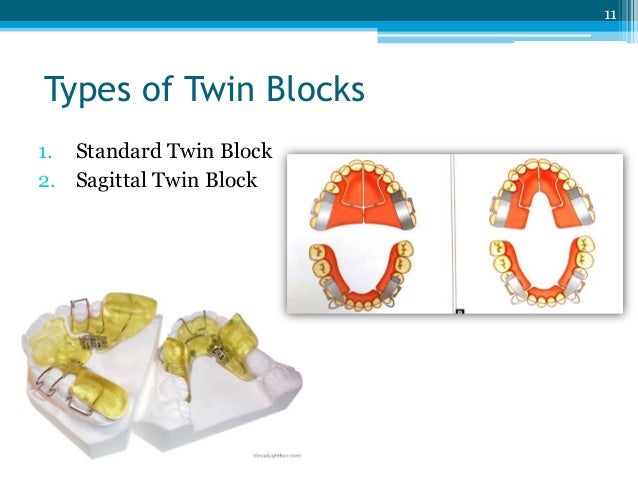
The other two-thirds split after they attach to the wall of the womb. As a result, they share a placenta. The technical name for this is monochorionic.
In a very small number of identical twins, splitting might happen even later. In this case, both twins share an inner sac, called the amnion, in addition to sharing a placenta. The technical name for this is monoamniotic twins. They’re often called MoMo twins.
Identical twins happen in around 1 in 250 pregnancies in Australia.
Although identical twins have the same genes, they don’t always look the same. This is because children’s health and development are shaped not only by genes but also by experiences in the womb and after birth. For example, a twin who gets less blood from a shared placenta might weigh less at birth.
Sharing a placenta or inner sac: why it’s important to know
Sharing a placenta means that twins share a blood supply during pregnancy.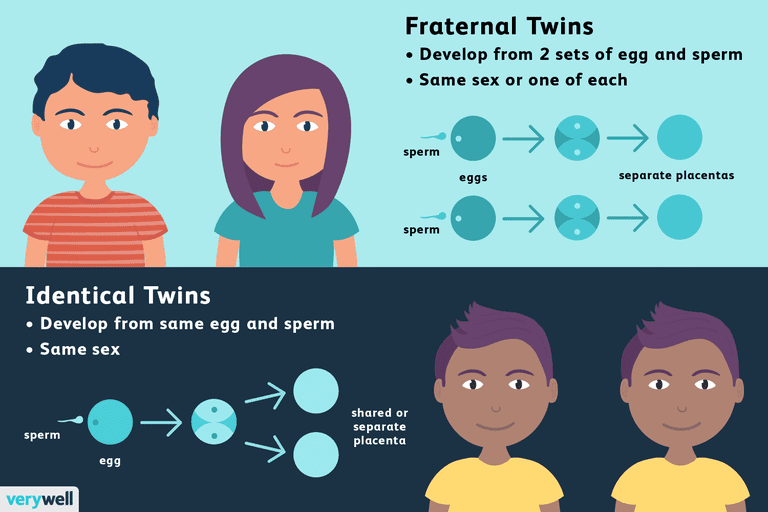 Sometimes the blood supply is shared unequally, which can cause health problems for both twins.
Sometimes the blood supply is shared unequally, which can cause health problems for both twins.
Women who are pregnant with twins sharing a placenta need to be checked more often than women who are pregnant with twins with separate placentas. Frequent checks help to pick up any complications early.
Twins sharing an inner sac (monoamniotic) are also at a higher risk of complications during pregnancy because of the chance that their umbilical cords might tangle and cut off their blood supply. These twins are checked even more closely. Medical professionals often recommend that these twins are born at 32-34 weeks. This is earlier than other types of twins, who are generally born at 37-38 weeks.
Medical professionals use ultrasound to work out how many placentas twins have. The earlier the ultrasound, the more accurately it can say how many placentas there are. It gets harder to work out later in pregnancy. After the birth, medical staff will look at the placentas to check what type of twins they are.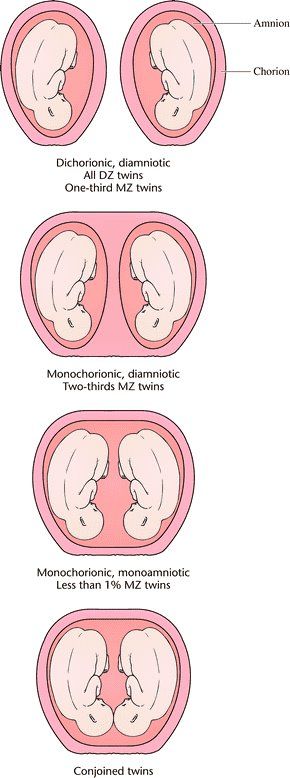
Fraternal or identical: why it’s important to know
Same-sex twins with separate placentas can be fraternal or identical. For health reasons, it’s good to know whether your twins are fraternal or identical.
To find out whether twins are identical or fraternal, you can ask for a genetic test after your babies are born. This is called a zygosity test. The test doesn’t hurt and involves collecting a sample of cheek cells by rubbing the inside of your babies’ cheeks with a soft applicator (like a cotton bud). The cost of this test starts at $199 (for both twins) in Australia.
Identical twins are more likely than fraternal twins to get the same illness. If one of a pair of identical twins is diagnosed with a particular disease or health condition, like high blood pressure, the other twin should be checked often for early symptoms.
Because of their genetic make-up, identical twins will always be compatible for organ transplantation, if they ever need it. Fraternal twins are compatible only sometimes.
Fraternal twins are compatible only sometimes.
Other reasons why twins and parents of twins might want to know whether they’re fraternal or identical include:
- trying to work out the chance of having more twins in future pregnancies (only fraternal twins run in families)
- making sure they have the right information about their genetic make-up
- being able to answer questions from family, friends and others
- being involved in twin research
- just being curious!
Some identical twins are mirror twins – for example, their hair parts on opposite sides, they are oppositely handed, or they have birthmarks on opposite sides of their body. In some rare cases, their internal organs can be mirror images of each other. It’s not known why some twins are like this.
In very rare cases, twins can be born physically joined together in different ways. These twins, called conjoined twins (previously called Siamese twins), can happen if the fertilised egg splits quite late after fertilisation.
Triplets (1 in 5000 births) and quadruplets (less than 1 in 100 000 births) can develop as a result of combinations of fraternal and identical twinning. There are no reliable figures for quintuplets (5 babies) and sextuplets (6 babies).
More about twins
In Australia, twins happen in 1 in every 80 births. This means that 1 in 40 Australians is a twin.
The birth rate of identical twins is the same around the world and doesn’t vary with the mother’s age.
In contrast, the birth rate of fraternal twins varies widely across countries and can be influenced by the mother’s age. Women aged over 35 years are the most likely to have fraternal twins, because their ovaries are more likely to release more than one egg at a time.
More twins were born from the 1990s to the mid-2000s. This is because it was common to transfer more than one embryo during in-vitro fertilisation (IVF) treatments. The rate of twins from IVF is now lower, because it’s now usual practice to transfer only a single embryo.
Twins - identical and fraternal
Multiple births are more common than they were in the past, due to the advancing average age of mothers and the associated rise in assisted reproductive techniques, in particular the use of fertility drugs. Twins account for over 90 per cent of multiple births. There are two types of twins – identical (monozygotic) and fraternal (dizygotic).
To form identical twins, one fertilised egg (ovum) splits and develops two babies with exactly the same genetic information. This differs from fraternal twins, where two eggs (ova) are fertilised by two sperm and produce two genetically unique children, who are no more alike than individual siblings born at different times. Twins are more or less equally likely to be female or male. Contrary to popular belief, the incidence of twins doesn’t skip generations.
Factors that increase the odds of having twins
Some women are more likely than others to give birth to twins.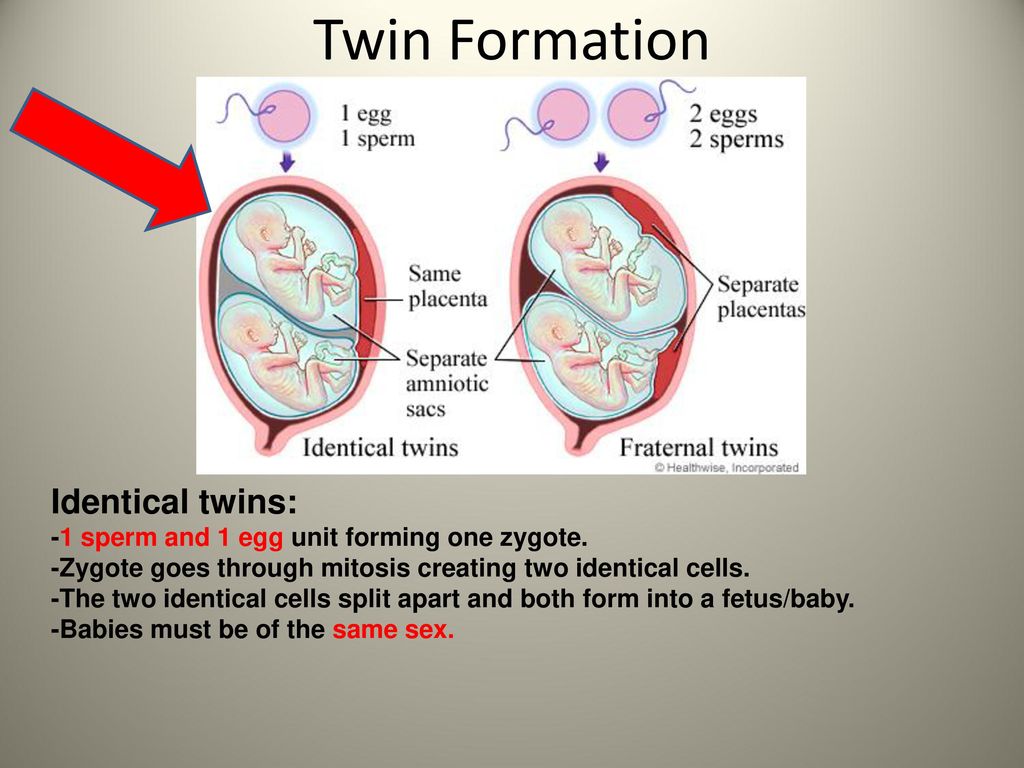 The factors that increase the odds include:
The factors that increase the odds include:
- Advancing age of the mother – women in their 30s and 40s have higher levels of the sex hormone oestrogen than younger women, which means that their ovaries are stimulated to produce more than one egg at a time.
- Number of previous pregnancies – the greater the number of pregnancies a woman has already had, the higher her odds of conceiving twins.
- Heredity – a woman is more likely to conceive fraternal twins if she is a fraternal twin, has already had fraternal twins, or has siblings who are fraternal twins.
- Race – Black African women have the highest incidence of twins, while Asian women have the lowest.
- Assisted reproductive techniques – many procedures rely on stimulating the ovaries with fertility drugs to produce eggs and, often, several eggs are released per ovulation.
Fertilisation
Hormones secreted by the ovaries, and a small gland in the brain called the pituitary, control the menstrual cycle. The average cycle is around 28 days. After a menstrual period, rising levels of the hormone oestrogen help to thicken the lining of the womb (the endometrium) and release an egg from one of the ovaries (ovulation).
The average cycle is around 28 days. After a menstrual period, rising levels of the hormone oestrogen help to thicken the lining of the womb (the endometrium) and release an egg from one of the ovaries (ovulation).
If the egg is fertilised on its journey down the fallopian tube, it lodges in the thickened womb lining, starts dividing and evolves into an embryo.
Identical or ‘monozygotic’ twins
Around one in three sets of twins is identical. This occurs because the fertilised egg divides in two while it is still a tiny collection of cells. The self-contained halves then develop into two babies, with exactly the same genetic information.
Twins conceived from one egg and one sperm are called identical or ‘monozygotic’ (one-cell) twins. The biological mechanisms that prompt the single fertilised egg to split in two remain a mystery.
Approximately one quarter of identical twins are mirror images of each other, which means the right side of one child matches the left side of their twin.
Fraternal or ‘dizygotic’ twins
Around two in three sets of twins are fraternal. Two separate eggs (ova) are fertilised by two separate sperm, resulting in fraternal or ‘dizygotic’ (two-cell) twins. These babies will be no more alike than siblings born at separate times. The babies can be either the same sex or different sexes, with the odds roughly equal for each.
The proposed ‘third-twin type’
Some researchers believe there may be a third type of twin, although medical opinion is still divided. It is proposed that the egg splits in two, and each half is then fertilised by a different sperm. This theory is an attempt to explain why some fraternal twins look identical.
The normal length of gestation for a single baby is around 40 weeks. However, gestation for twins, either identical or fraternal, is usually around 38 weeks. This shorter time is due to the increased demands on the mother’s body, and the inability of the babies to receive all the nutrients they need in utero.
Since twins are usually premature, they are more likely to have lower birth weights. Prematurity is associated with increased risk of a number of disorders, including jaundice.
Giving birth to twins
Childbirth can give rise to complications when just one baby is present, so twins present extra potential for difficulties. It is advised that women carrying twins give birth in hospital, rather than at home. The babies can be delivered vaginally, but caesarean section delivery may be considered a better alternative in some circumstances.
Zygosity testing
It is difficult to tell if twins are identical or fraternal at birth. Some identical twins may be born with individual sets of membranes, which may lead to the mistaken assumption that the babies are fraternal.
One way to tell the difference is to have the twins DNA-tested. Identical twins share the same genetic information, while fraternal twins share around half.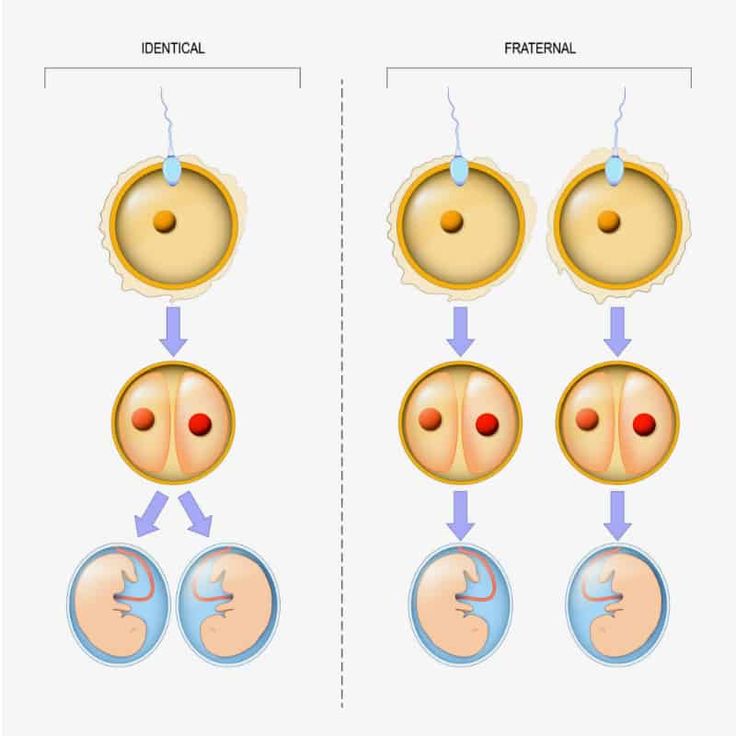 The test can be done with a sample of cheek cells, collected painlessly. Other tests include blood group examinations.
The test can be done with a sample of cheek cells, collected painlessly. Other tests include blood group examinations.
Where to get help
- Your doctor
- Paediatrician
- Maternity hospital
Things to remember
- Twins account for over 90 per cent of multiple births.
- To form identical or monozygotic twins, one fertilised egg (ovum) splits and develops into two babies with exactly the same genetic information.
- To form fraternal or dizygotic twins, two eggs (ova) are fertilised by two sperm and produce two genetically unique children.
There are 2 types of people according to the sign of the Zodiac. Which one do you belong to? :: Infoniak
07 Nov, 2018 04:02 42821 Astrology, Zodiac signs
18+
Incredible facts
Did you know that there are two types of zodiac signs?
Each zodiac sign has unique personality traits.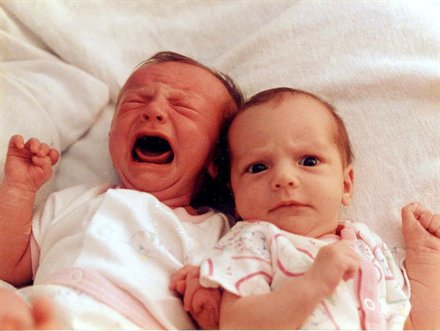 This does not mean that all people of a certain sign will have all these features, but most likely most of them will be present. nine0005
This does not mean that all people of a certain sign will have all these features, but most likely most of them will be present. nine0005
However, there are people who believe that they do not have the characteristic features of the signs of the Zodiac, and there is a reason for this.
Read also: Were you born at the junction of the signs of the Zodiac? Here's what it means.
Your zodiac sign, depending on your birth chart, can manifest itself in completely different ways. You can call them the first and second type. At the same time, the first type is characterized by features that can be considered typical for representatives of this zodiacal constellation, while the 2nd type manifests itself a little differently. nine0005
So what type are you?
Aries
Aries type 1: Loud, aggressive, wins any argument
The first type of Aries is a born leader, a person who leads and is ready to face any situation head on. Such a person never gives up his positions and will always be able to protect you in any dispute.
Such a person never gives up his positions and will always be able to protect you in any dispute.
Aries of the first type are absolutely straightforward and will not use tricks or manipulate you in any way. He simply does not need it: he gets everything he wants by acting directly. And most of the time he's right. nine0005
They are the loudest people in any company, the most aggressive in their desires, and some of the most productive people you will ever meet.
Aries type 2: Cheerful and charming, but will still win any argument
Aries of the second type is as straightforward as the first, but tries to achieve everything gracefully. And all because this type is not so aggressive. Instead of breaking through walls, they win over others with their smile and charismatic personality that helps them get what they want. nine0005
These are some of the biggest optimists, but don't underestimate them. They are just as capable of getting their way as the Aries of the first type, just by doing it in a more friendly manner.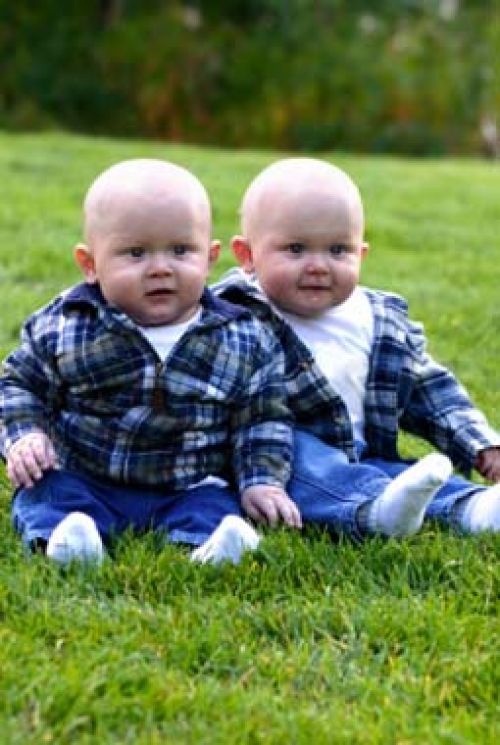
Taurus
Taurus type 1: Calm and a little lazy, good cook
Taurus of both types are people whose hugs will warm any person, and who will always be there if needed. However, this is also the type of people who tend to go with the flow and take any situation calmly. nine0005
Although the first type of Taurus knows how to have fun in a big company, they are most comfortable in a more relaxed environment.
In addition, representatives of this zodiac sign are the best at cooking, they know how to take care of themselves, but they are quite lazy.
Taurus Type 2: The Embodiment of Beauty
The second type of Taurus, as a rule, is a little more spoiled, simply because they have excellent external data. For every homebody Taurus, there is always another Taurus who always looks stunning and walks around in the most fashionable and expensive clothes. nine0005
Such Taurus have an innate sense of style and are a role model for many people.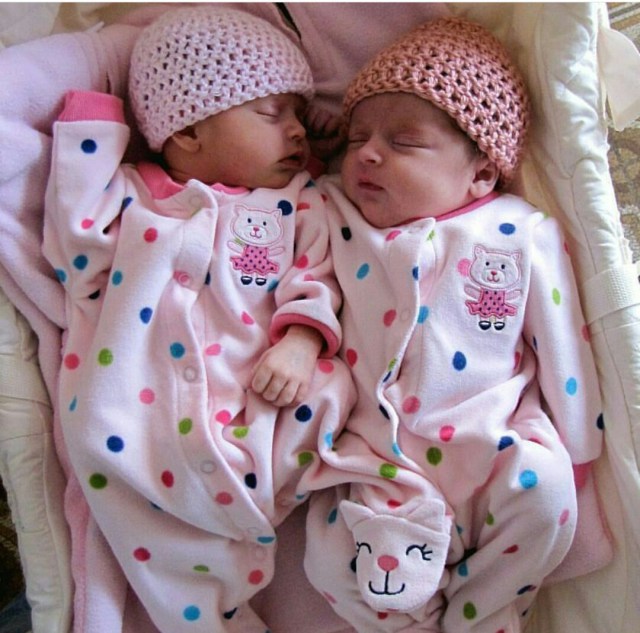
Unlike the first more calm and introverted type of Taurus, the second feels great in a large group of people and is always ready to indulge his desires.
Gemini
Gemini type 1: Chameleons with a developed gift of eloquence
This type of Gemini is great at handling any social situation and has good communication skills. Around them there is always a group of like-minded people. These are real extroverts, although it cannot be said that they do not have any complexes. nine0005
A typical representative of the first type of Gemini can fit into any situation, because he is able to embody several personalities at once. They are ideal mediators who perfectly fulfill this role in everyday life.
Gemini type 2: Mood swingers who need hugs
The second type of Gemini is also sociable and gets along well with people, but it is more difficult to adapt. Many Geminis of this type suffer from social phobia and mood swings. While the first type of Gemini uses their duplicity, turning the face that the situation requires, the second type of duality manifests itself in their mood. nine0005
Many Geminis of this type suffer from social phobia and mood swings. While the first type of Gemini uses their duplicity, turning the face that the situation requires, the second type of duality manifests itself in their mood. nine0005
You never know how a Type 2 Gemini will react in a given situation, because it's mostly a matter of chance. Also, this type is more of an introvert due to problems with low self-esteem, and often needs strong hugs.
Cancer
Cancer type 1: Caring and emotional, a little insecure
A typical representative of Cancer is the embodiment of a caring friend. He will always remind you to put on a warm hat or cook you dinner. Cancers of the first type can be a little insecure because they do not hide their feelings. nine0005
They are very emotional, and others often feel that they need protection, although Cancers are much stronger than they seem.
Cancers of this type are ready for anything for the sake of loved ones and their family, being also great friends.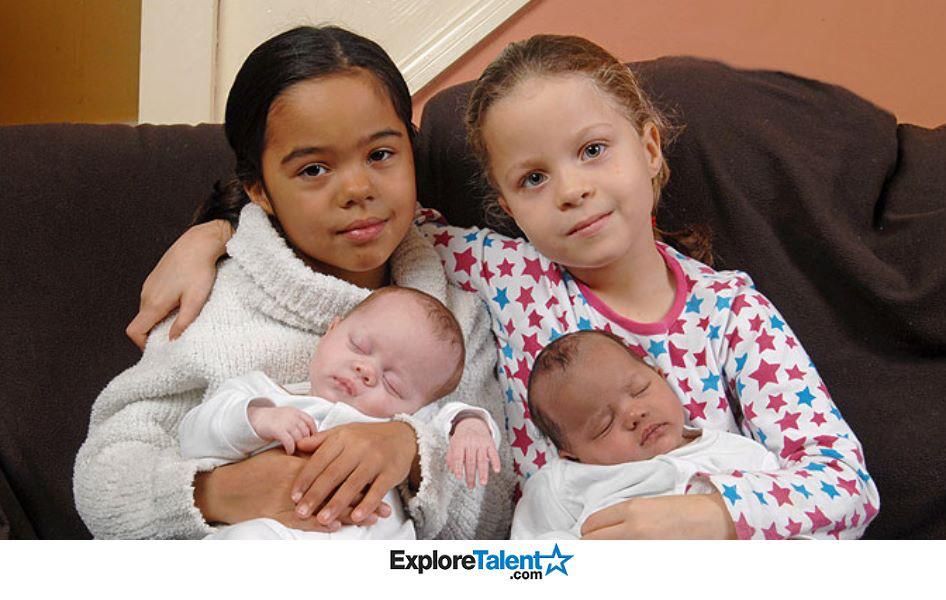 These are people with a wide open soul, who can easily cry.
These are people with a wide open soul, who can easily cry.
Cancer type 2: Never cried in your life, make you cry in no time
Type 2 cancer is also emotional, but would rather die than cry in front of everyone. He is not inclined to overprotect others and can be even cruel somewhere. He won't pity you when you cry, but rather give you the magic kick he thinks you need. nine0005
They'd rather make you cry than shed a single tear. With this type of Cancer, your relationship will not be easy. But do not consider them callous. They just don't want people to make the wrong choice. Their kindness is often hidden under a more severe shell.
Leo
Leo type 1: See themselves as the center of the universe, don't get enough attention
The first type of Leo is always looking for his place under the Sun and is ready for anything to get his way. He wants to shine on the stage, to be the center of the Universe and has a bright and attractive personality enough for this. nine0005
He wants to shine on the stage, to be the center of the Universe and has a bright and attractive personality enough for this. nine0005
They can not be called notorious egoists, but they know their own worth and hope that others understand this too.
In general, Lions of the first type live in the hope of reaching their high point and are actively working towards this goal. To other more reserved signs of the Zodiac, Type 1 Leos can be a little tiresome, but others adore them.
Leo type 2: Actually, they are the center of the universe, but they want to be left alone
The second type of Leo is, in fact, the opposite of the first type. If the 1st type is waiting for its finest hour, which is still out of reach, the second is the real center of the Universe, the king of beasts, but does not like to attract too much attention to itself.
He avoids crowds and prefers to be left alone. But, as soon as he decides to arrange a quiet and peaceful life for himself, something disturbs his peace, and he again attracts everyone's attention. The second type of Leo just needs his corner in this world. nine0005
The second type of Leo just needs his corner in this world. nine0005
Read also: Zodiac stereotypes that are 100% wrong (or almost...)
Virgo
Virgo type 1: Organized and responsible
The first type of Virgo is the person who will remind you of the most important things. He will always give you a lift, take care of you if you are sick, or help you move.
You should not expect emotional support from them in the sense that you cannot cry on their shoulder. But if you are going through a relationship breakup and seek their advice, Virgo will recommend that you rethink your life, reflect on your decisions, or offer a practical solution. nine0005
For Virgos, actions carry more weight than words, and they have an excellent memory.
Virgo type 2: Staring at your phone for hours
The second type of Dev is also practical, like the first, but unlike the latter, he knows how to control any situation with the exception of his life.
They will always have good advice for you, but they never listen to their own advice and end up in a situation they don't want to be in. nine0005
The second type of Dev is much more likely to miss some details that the 1st type will quickly understand.
But the second type has its strengths: they quickly and easily form an opinion about a person. They very rarely make mistakes in people. Their pragmatism is manifested in relation to others.
Scales
Libra type 1: Does not care about the opinions of others, can make you doubt your life
The first type of Libra is people who can adapt to any situation, have the gift of persuasion and eloquence.
They pay great attention to their appearance and beauty in general, trying to look attractive under any circumstances. Therefore, this type of Libra always has crowds of fans.
These are not necessarily fans of a romantic nature. Libras often come across as successful people, and this leads many people to seek advice or inspiration from them. nine0005
Libras often come across as successful people, and this leads many people to seek advice or inspiration from them. nine0005
Libra type 2: Likes to stay at home, watch movies
The second type of Libra is more of an introvert and not as careful with their appearance. They would rather make themselves comfortable at home and watch movies for several days in a row than go to a party.
This type of Libra pays close attention to many things and knows a lot more than it seems from the outside. Despite some isolation, these Libras retain charisma, which undoubtedly attracts others. nine0005
Scorpion
Scorpio Type 1: Very tense and deep, considered evil by others
The first type of Scorpio is, perhaps, the person whom all other representatives of the signs of the Zodiac are afraid of. These people are ambitious, and their honesty can sometimes be intimidating. Those who do not get along with the first type of Scorpio involuntarily wonder if they are not a fiend. Such questions arise in no small part because of the mysterious nature of Scorpio. nine0005
Those who do not get along with the first type of Scorpio involuntarily wonder if they are not a fiend. Such questions arise in no small part because of the mysterious nature of Scorpio. nine0005
People of this zodiac sign are also prone to self-destruction. At the same time, they are adamant and ready to use any means to achieve their goal. As a result, they often find themselves in dangerous situations that should be avoided.
At the same time, this type of Scorpio is a very devoted and wonderful friend, although he is selective in choosing friends.
Scorpio type 2: People with a great sense of humor will cheer you up in difficult times
The second type of Scorpio is similar to the first, but it is not as intense, or at least tries not to be. Instead of surrounding himself with mystery, he draws others in with his wit.
It is worth mentioning that Scorpio's sense of humor is specific and can easily hurt the feelings of another person. However, the second type of this zodiac sign is more prone to sympathy, although relations with them cannot be called easy either. nine0005
Such a Scorpio knows how to cheer up if you are not in the spirit, but it can also give a kick for the good of the cause.
Sagittarius
Sagittarius type 1: Constantly travel and think they know the meaning of life
The first type of Sagittarius is a person who has a strong craving for travel and dreams of traveling around the world, avoiding any responsibility.
This is how they think they can find the meaning of life. This type of Sagittarius quickly gets bored with everything, it is difficult for them to sit in one place, and they run from marriage and long-term relationships like fire. nine0005
To other people, this behavior of Sagittarius seems strange, but the representatives of this zodiac sign themselves are not ready to sacrifice their freedom. They would rather go in search of the real truth than live an ordinary life.
Sagittarius type 2: Often underestimated, in fact, they know the meaning of life
The second type of Sagittarius is much less afraid of commitment. Although they also love traveling, it is not a priority for them. nine0005
They are more focused on the search for the truth, but not with the goal of traveling around the world, but to find their place in it.
Sagittarians are often underestimated, as they are considered fickle, but Sagittarians of the 2nd type are much less guilty of this. They try less to find the meaning of life, and eventually find it for themselves. These Sagittarians are easier to enter into a serious relationship, as they find something worth settling down for.
Capricorn
nine0054
Capricorn type 1: They live at work, they only have acquaintances, but no friends
Type 1 Capricorn is the most driven person in the zodiac. He is traditional, gives all his strength to the work that replaces everything else for him.
He is traditional, gives all his strength to the work that replaces everything else for him.
They value people less, choosing friends solely on their usefulness or on what they themselves can offer them.
Sometimes it seems that they have no friends at all, but only acquaintances, but this is not entirely true. Capricorns are very selective, and if they make friends, then only real ones, for the sake of which they are ready to go through fire and water. These are very devoted people who will help a loved one to realize their dreams. nine0005
Capricorn type 2: Loving slobs, give the best hugs
The second type of Capricorn, although as industrious as the first, his ambitions often manifest themselves in another area. These Capricorns love the company of people more, are less serious and have a developed, albeit dryish sense of humor.
Although they won't let you cry on their shoulder, you can always have a nice time with them or get a reassuring hug in a certain situation.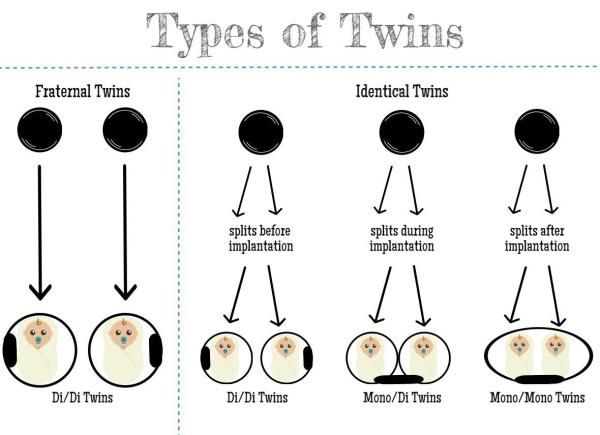 nine0005
nine0005
These Capricorns do not shy away from work, but much more often indulge themselves and, if possible, can be charming loafers.
Aquarius
Aquarius type 1: Moderate to severe megalomania, walking encyclopedias
The first type of Aquarius is knowledgeable and can become a little arrogant. If you need to check some information, and there is no Internet nearby, feel free to contact Aquarius, who will tell you any facts. nine0005
Aquarians of any type are the most eccentric representatives of the zodiac circle, but the first type is less so.
Also, Aquarians are able to emotionally withdraw, dealing with exclusively intellectual issues. They show their emotions only to the closest people.
Aquarius type 2: Aliens from another planet
This is the most unusual person you will have to face. Although intelligence is the hallmark of any Aquarius, the 2-type of this zodiac sign has a completely non-standard personality.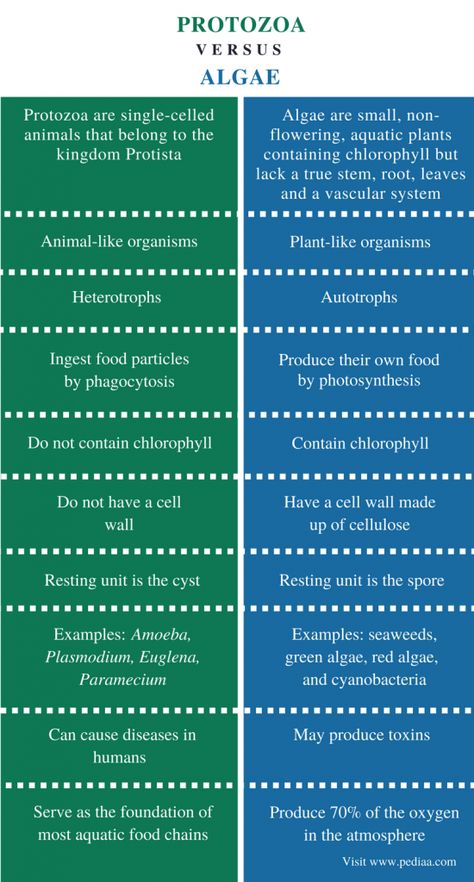 nine0005
nine0005
Aquarians of this type behave differently every time, and you should always expect some kind of surprise from them. These Aquarians have good intentions, and although they appreciate loved ones, they will never change themselves.
The second type of Aquarius makes friends much easier, as they are more open and straightforward in their feelings. They always do things their own way, and even if others are not ready to accept them, they don't care at all.
Pisces
Pisces type 1 : Super sensitive and dreamy
The first type of Pisces are real dreamers who always think outside the box and come up with ideas that may never materialize. These Pisces are one of the most sensitive representatives of the zodiac signs after Cancers.
But unlike other water signs, they sometimes can't even take care of themselves. nine0005
They can be great friends and lovers, but often lose confidence in themselves because they are afraid of getting burned.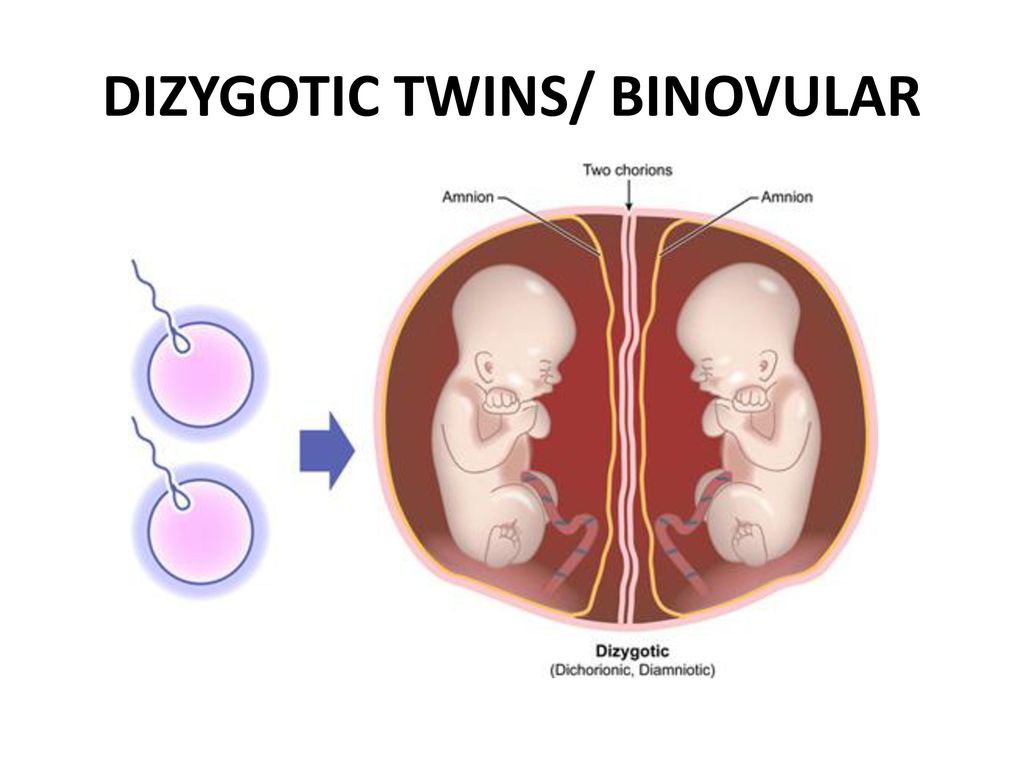
Of the two types, among the first type of Pisces there are more creative people who devote their lives to some abstract ideas. Among other things, these Pisces are very kind and sweet.
Read also: Myths and truth about Zodiac Signs
Pisces type 2: The most ruthless people you will meet in your life
Pisces are one of the most cunning people among the signs of the zodiac. While many consider Capricorns and Scorpios to be the most violent, fearsome and ambitious, Pisces of the second type can outdo them all put together.
Yes, they are also emotional, like Pisces of the first type, but they are not as shy, kind and sweet as it seems at first glance.
Skillfully using words and various manipulations, they can cause you the most negative emotions, and make you feel guilty. nine0005
So if there are Pisces in your environment who are not creative or emotional, remember that this type of Pisces is able to release its claws at any time.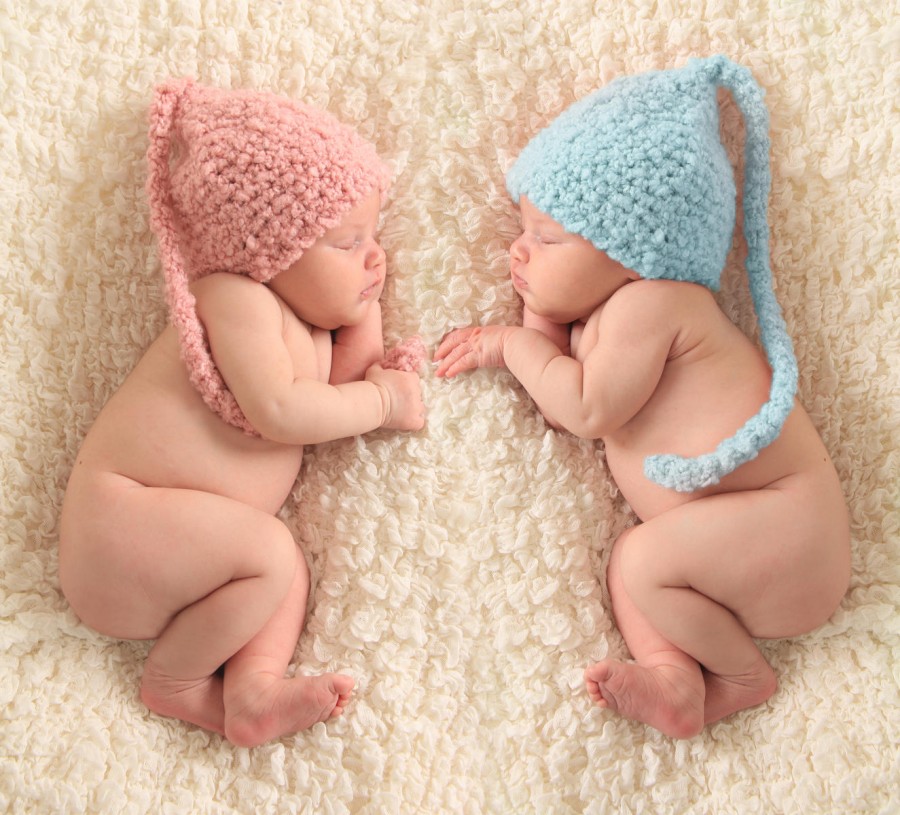
Source: thetalko - Type A and type B according to the sign of the Zodiac
Translation: Filipenko L.V.
We are in social networks
Multiple pregnancy
Author: Mikheeva Natalya Grigoryevna, Malyshok magazine
A multiple pregnancy is a pregnancy in which two or more fetuses develop simultaneously in the uterus. Multiple pregnancy occurs in 0.4 - 1.6% of all pregnancies. Recently, there has been an obvious trend towards an increase in the incidence of such pregnancies due to the active use of assisted reproduction technologies, including in vitro fertilization (IVF).
Types of multiple pregnancies
Children born in multiple pregnancies are called TWINS. There are two main types of twins: monozygotic (identical, homologous, identical, similar) and dizygotic (fraternal, heterologous, different). African countries have the highest twin birth rate, Europe and the USA have an average rate, and Asian countries have a low rate.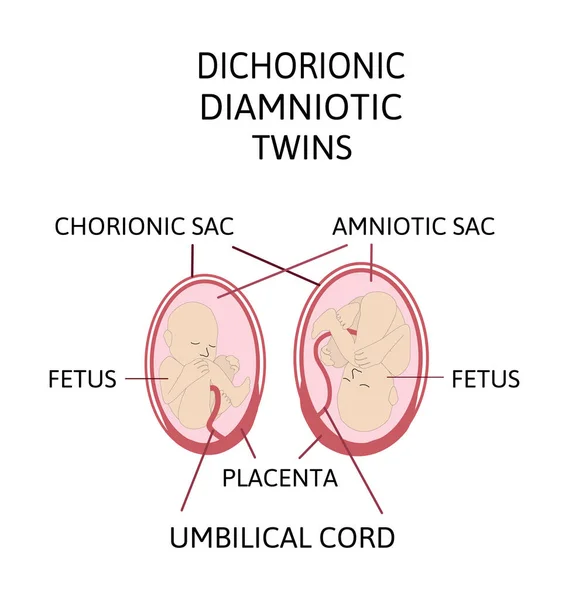 nine0005
nine0005
Dizygotic (fraternal) twins are more common (in 66-75% of all twins). The birth rate of dizygotic twins varies from 4 to 50 per 1000 births. Dizygotic twins occur when two separate eggs are fertilized. The maturation of two or more eggs can occur both in one ovary and in two. The predisposition to develop dizygotic twins may be maternally inherited. Dizygotic twins can be either same-sex or opposite-sex, they look like each other like ordinary brothers and sisters. With fraternal twins, two placentas are always formed, which can be very close, even touching, but they can always be separated. Two fruit spaces (i.e., fetal bladders or two “houses”) are separated from each other by a septum consisting of two chorionic and two amniotic membranes. Such twins are called dizygotic dichorionic diamniotic twins. nine0005
Monozygotic (identical) twins are formed as a result of the separation of one fetal egg at various stages of its development. The frequency of birth of monozygotic twins is 3-5 per 1000 births.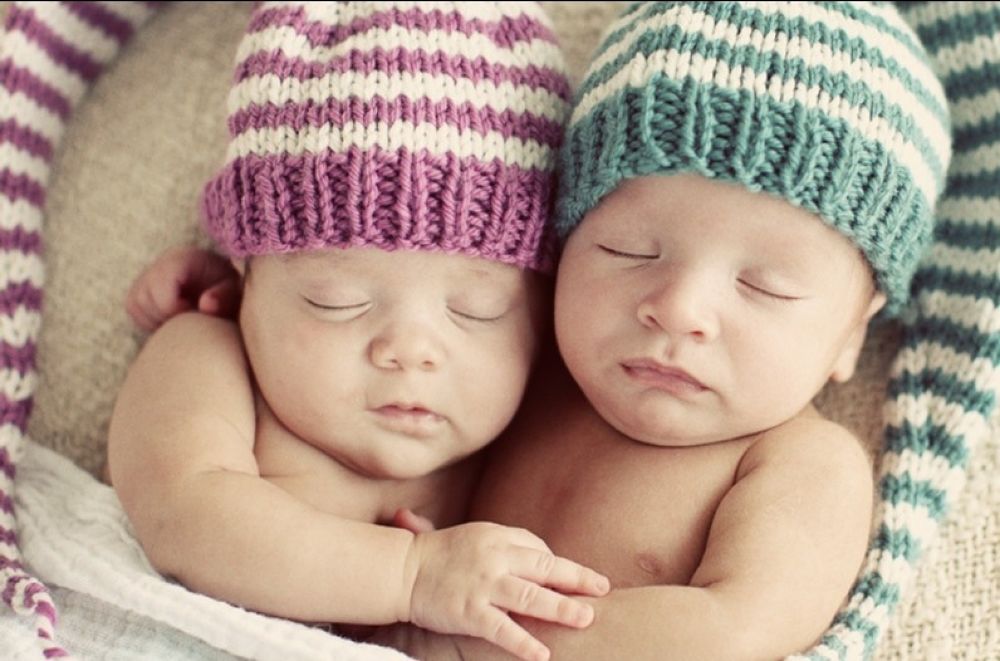 The division of a fertilized egg into two equal parts can occur as a result of a delay in implantation (immersion of the embryo in the uterine mucosa) and oxygen deficiency, as well as due to a violation of the acidity and ionic composition of the medium, exposure to toxic and other factors. The emergence of monozygotic twins is also associated with the fertilization of an egg that had two or more nuclei. If the separation of the fetal egg occurs in the first 3 days after fertilization, then monozygotic twins have two placentas and two amniotic cavities, and are called monozygotic diamniotic dichoriones (Fig. A). If the division of the ovum occurs between 4 - 8 days after fertilization, then two embryos will form, each in a separate amniotic sac. Two amniotic sacs will be surrounded by a common chorionic membrane with one placenta for two. Such twins are called monozygotic diamniotic monochorionic twins (Fig. B). If division occurs by 9- 10th day after fertilization, then two embryos are formed with a common amniotic sac and placenta.
The division of a fertilized egg into two equal parts can occur as a result of a delay in implantation (immersion of the embryo in the uterine mucosa) and oxygen deficiency, as well as due to a violation of the acidity and ionic composition of the medium, exposure to toxic and other factors. The emergence of monozygotic twins is also associated with the fertilization of an egg that had two or more nuclei. If the separation of the fetal egg occurs in the first 3 days after fertilization, then monozygotic twins have two placentas and two amniotic cavities, and are called monozygotic diamniotic dichoriones (Fig. A). If the division of the ovum occurs between 4 - 8 days after fertilization, then two embryos will form, each in a separate amniotic sac. Two amniotic sacs will be surrounded by a common chorionic membrane with one placenta for two. Such twins are called monozygotic diamniotic monochorionic twins (Fig. B). If division occurs by 9- 10th day after fertilization, then two embryos are formed with a common amniotic sac and placenta. Such twins are called monozygotic monoamniotic monochorionic (Fig. B) If the egg is separated at a later date on the 13th - 15th day after conception, the separation will be incomplete, which will lead to the appearance of conjoined (undivided, Siamese) twins. This type is quite rare, approximately 1 observation in 1500 multiple pregnancies or 1: 50,000 - 100,000 newborns. Monozygotic twins are always the same sex, have the same blood type, have the same eye color, hair, skin texture of the fingers, and are very similar to each other. nine0005
Such twins are called monozygotic monoamniotic monochorionic (Fig. B) If the egg is separated at a later date on the 13th - 15th day after conception, the separation will be incomplete, which will lead to the appearance of conjoined (undivided, Siamese) twins. This type is quite rare, approximately 1 observation in 1500 multiple pregnancies or 1: 50,000 - 100,000 newborns. Monozygotic twins are always the same sex, have the same blood type, have the same eye color, hair, skin texture of the fingers, and are very similar to each other. nine0005
Twin births occur once in 87 births, triplets - once in 87 2 (6400) twins, quadruples - once in 87 3 (51200) triplets, etc. (according to the Gallin formula). The origin of triplets, quadruplets, and more twins varies. So, triplets can be formed from three separate eggs, from two or one egg. They can be monozygotic and heterozygous. Quadruples can also be identical and fraternal.
Features of the course of multiple pregnancy
In case of multiple pregnancies, the woman's body is subject to increased requirements.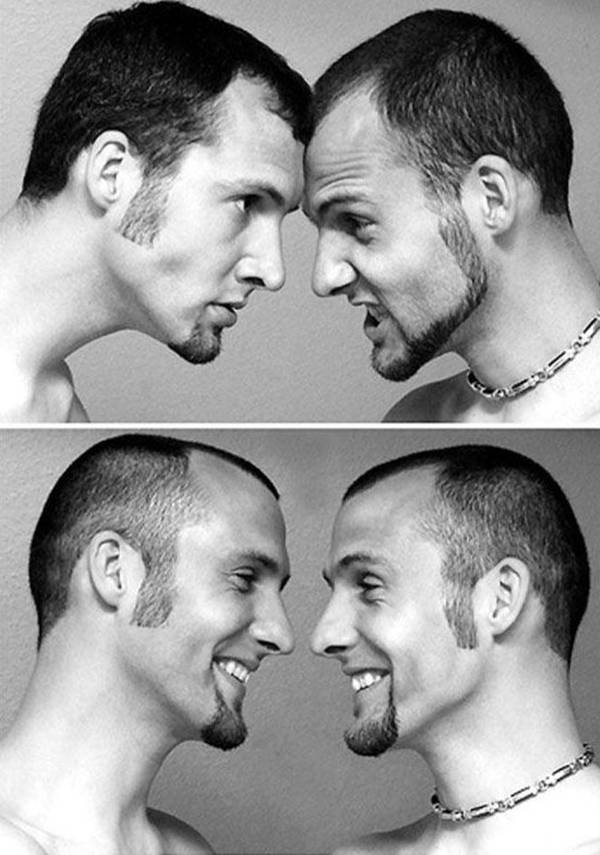 All organs and systems function with great tension. In connection with the displacement of the diaphragm by the enlarged uterus, the activity of the heart becomes difficult, shortness of breath, fatigue occur. Enlargement of the uterus, especially towards the end of pregnancy, leads to compression of the internal organs, which is manifested by impaired bowel function, frequent urination, and heartburn. Almost 4-5 times more often there is the development of preeclampsia, which is characterized by an earlier onset, a protracted and more severe clinical course, often combined with acute pyelonephritis of pregnant women. Due to the increased need and consumption of iron, iron deficiency anemia often develops in pregnant women. Significantly more often than with a singleton pregnancy, complications such as bleeding during pregnancy and childbirth, anomalies in labor, and a low location of the placenta are observed. Often, with multiple pregnancies, abnormal positions of the fetus occur. One of the most common complications in multiple pregnancy is its premature termination.
All organs and systems function with great tension. In connection with the displacement of the diaphragm by the enlarged uterus, the activity of the heart becomes difficult, shortness of breath, fatigue occur. Enlargement of the uterus, especially towards the end of pregnancy, leads to compression of the internal organs, which is manifested by impaired bowel function, frequent urination, and heartburn. Almost 4-5 times more often there is the development of preeclampsia, which is characterized by an earlier onset, a protracted and more severe clinical course, often combined with acute pyelonephritis of pregnant women. Due to the increased need and consumption of iron, iron deficiency anemia often develops in pregnant women. Significantly more often than with a singleton pregnancy, complications such as bleeding during pregnancy and childbirth, anomalies in labor, and a low location of the placenta are observed. Often, with multiple pregnancies, abnormal positions of the fetus occur. One of the most common complications in multiple pregnancy is its premature termination.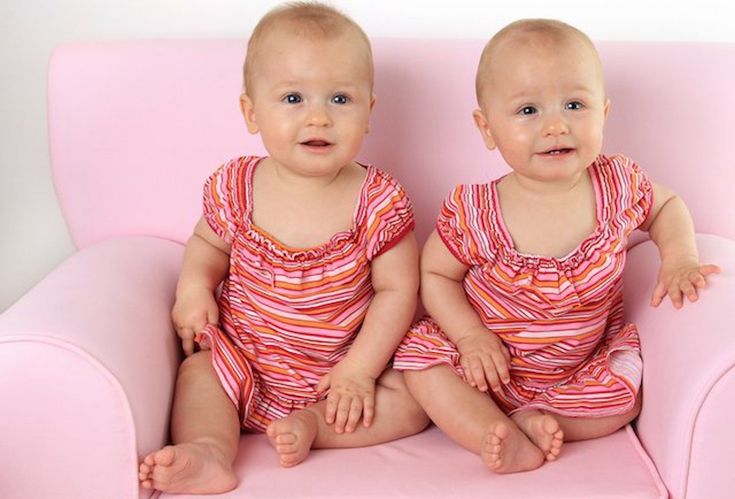 Preterm birth is observed in 25-50% of cases of such pregnancies. nine0005
Preterm birth is observed in 25-50% of cases of such pregnancies. nine0005
The development of term twins is normal in most cases. However, their body weight is usually less (by 10% or more) than in singleton pregnancies. With twins, a birth weight of less than 2500 g is observed in 40-60%. The low weight of twins is most often due to insufficiency of the uteroplacental system, which is not able to adequately provide several fetuses with nutrients, trace elements and oxygen. The consequence of this is a delay in the development of the fetus, which is a common occurrence in multiple pregnancies. The mass of twins, respectively, decreases in proportion to their number (triplets, quadruplets, etc.). nine0005
With monochorionic twins in the placenta, anastomoses are often formed between the vascular systems of the fetus, which can lead to a serious complication - the syndrome of feto-fetal transfusion. In this case, there is a redistribution of blood from one fetus to another, the so-called "stealing". The severity of feto-fetal transfusion (mild, moderate, severe) depends on the degree of redistribution of blood through the anastomoses, which vary in size, number and direction.
The severity of feto-fetal transfusion (mild, moderate, severe) depends on the degree of redistribution of blood through the anastomoses, which vary in size, number and direction.
Diagnosis in multiple pregnancy
The most reliable method for diagnosing multiple pregnancy is ultrasound, which allows not only early diagnosis of multiple pregnancy, but also to determine the position and presentation of fetuses, localization, structure and number of placentas, the number of amniotic cavities, the volume of amniotic fluid, congenital malformations and antenatal fetal death, the state of the fetus from a functional point of view, the nature of the uteroplacental and fetal-placental blood flow. nine0005
In multiple pregnancies, due to the higher risk of complications, ultrasound monitoring is performed more frequently than in singleton pregnancies. With dizygotic twins, about once every 3-4 weeks, with monozygotic twins - once every 2 weeks.
In addition, examinations and control of clinical tests are carried out with great care, and CTG is regularly recorded from 28 weeks of pregnancy.
Birth management
Indications for caesarean section associated with multiple pregnancies are triplets (quadruple), the transverse position of both or one of the fetuses, breech presentation of both fetuses or the first of them, and not associated with multiple pregnancy - fetal hypoxia, anomalies labor activity, prolapse of the umbilical cord, extragenital pathology of the mother, severe gestosis, placenta previa and abruption, etc.
-
ECO
In the department of assisted reproductive technologies of the Maternity Hospital No. 2
, IVF is performed at the expense of the Republican budget for couples
who have received a positive decision from the Minsk city or regional commissions to provide one free IVF attempt.
No drug supply problem. There is no waiting list. nine0005The largest number of children
The largest number of children born to one mother, according to official data, is 69.
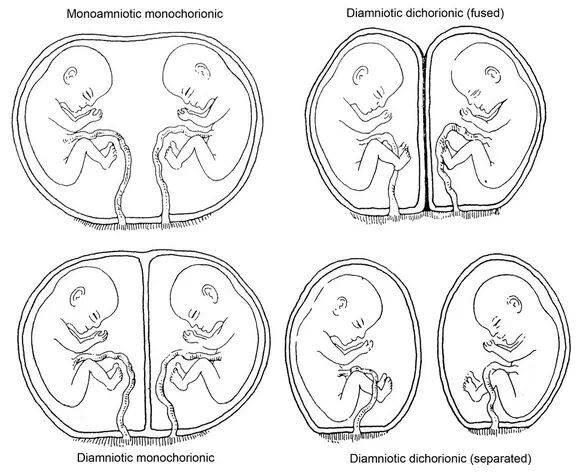 According to reports made in 1782, between 1725 and 1765. The wife of a Russian peasant, Fyodor Vasiliev, gave birth 27 times, giving birth to twins 16 times, triplets 7 times and 4 twins 4 times. Of these, only 2 children died in infancy.
According to reports made in 1782, between 1725 and 1765. The wife of a Russian peasant, Fyodor Vasiliev, gave birth 27 times, giving birth to twins 16 times, triplets 7 times and 4 twins 4 times. Of these, only 2 children died in infancy. The most prolific mother of our contemporaries is considered to be Leontina Albina (or Alvina) from San Antonio, Chile, who at 1943-81 years gave birth to 55 children. As a result of the first 5 pregnancies, she gave birth to triplets, and exclusively male.
Most birthed
The record number of births, 38, is claimed to be Elizabeth Greenhillies Abbots-Langley, c. Hertfordshire, UK. She had 39 children - 32 daughters and 7 sons.
The largest number of multiple births in one family
Maddalena Pomegranate from Italy (b. 1839) had triplets born 15 times. nine0054 There is also information about the birth on May 29, 1971 in Philadelphia, Pennsylvania, USA, and in May 1977 in Bagarhat, Bangladesh, 11 twins.
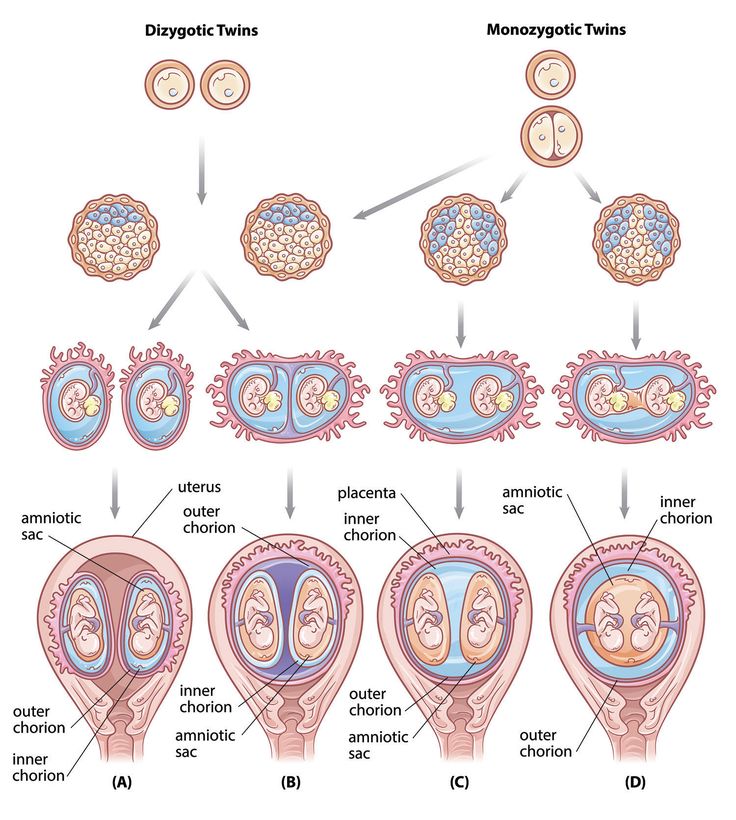 In both cases, no child survived.
In both cases, no child survived. Most fertile pregnancies
Dr. Gennaro Montanino, Rome, Italy, claimed to have removed, in July 1971, the embryos of 10 girls and 5 boys from the uterus of a 35-year-old woman who was 4 months pregnant. This unique case of 15-fertility was the result of infertility pills. nine0054 9 children - the largest number in one pregnancy - were born on June 13, 1971 by Geraldine Broadrick in Sydney, Australia. 5 boys and 4 girls were born: 2 boys were stillborn, and none of the rest survived more than 6 days.
The birth of 10 twins (2 boys and 8 girls) is known from reports from Spain (1924), China (1936) and Brazil (April 1946).The largest father
The largest father in the history of Russia is the peasant of the village of Vvedensky Yakov Kirillov, who in 1755 was presented to the court in connection with this (he was then 60 years old). The first wife of a peasant gave birth to 57 children: 4 times four, 7 times three, 9once twice and 2 times once.
